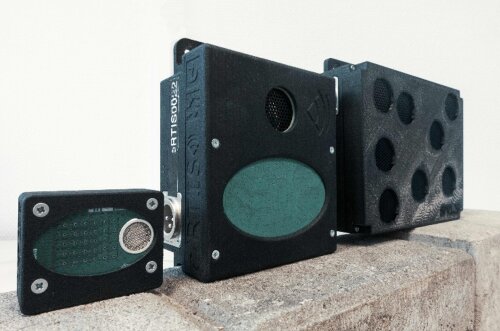Sonar sensing systems for autonomous navigation and smart industries applications
Based on over a decade of intense research, researchers of the Faculty of Applied Engineering updated the ultrasonic sensing modality - one of the oldest sensing modalities used in robotics - to be able to compete with other state-of-the-art sensing modalities for autonomous navigation and smart industries applications.
This industrially tested and validated sonar sensing systems is capable of capturing the entire frontal hemisphere. It is meant for use in industrial environments where other sensing modalities might struggle due to a lack of light, flying debris, extreme moisture, dust, fog, etc.

Context
A decade of intense research led to the an industrially viable and market ready version of the high resolution 3D imaging sonar. The technology is meant for applications in industrial environments where traditional sensing modalities such as LiDAR or cameras fail due to medium distortions. In these application scenarios, ultrasound can still retrieve high-resolution 3D object perception, allowing unencumbered sensing in challenging sensing scenarios. The researchers have tested their eRTIS sensing in a large variety of application domains, ranging from autonomous driving to mining, construction equipment, agriculture, nautical applications and navigation aids for wheelchairs.
Technology
The eRTIS line of 3D sonar sensors in one of the highest performing 3D sonar sensors currently available. Using an array of microphones in combination with broadband ultrasound allows us to accurately localize objects in 3D, even in acoustically difficult environments such as mining or agriculture. Through the usage of ultrasound we are capable of providing environmental perception even under severe medium distortions such as dust, fog, water spray and mud splashes. Next to the fundamental perception problem we have solved several enabling problems such as IP54 waterproofing, integration into industry-standard sensing networks and low-cost manufacturing of the sensor suite.
This will help:
- System integrators to provide next-level close range environmental perception to use-case providers, enabling higher levels of autonomy in industrial applications
- Companies to integrate high-level ultrasound sensing in their autonomy projects through enhancement of their perception suite.
Some illustrations
Partners we search for:
As strong advocates of industry-driven innovation, the researchers are always excited to work along with external partners who need or want to experiment with ultrasound sensing in their specific application scenarios.
Their experience in working with a large range of companies, combined with fast prototyping and development methodology, ensures rapid testing and evaluation in new sensing scenarios. They have crafted an array of application enablers such as simulation tools, ROS API's, and networking features to construct networks of sonar sensors.
They are looking for:
- investors to further develop the current prototype into a commercial product,
- use-case providers who are interested in 3D ultrasound sensing for industrial applications, and want to test our 3D sensing systems in their applications
- system Integrators looking for novel 3D sensing modalities to deploy at their clients.
About the researchers
The Constrained Systems Lab of the Faculty of Applied engineering researches novel sensing systems for industrial applications. One of their flagship projects is 3D ultrasound sensing for harsh environments, in which they are amongst the leading groups in the field.
IP Position
Several patents on the core technology have been granted to the University of Antwerp.
More information
University of Antwerp
Valorisation Office
Middelheimlaan 1
2020 Antwerpen - Belgium

